Etiqueta "java"
Se han encontrado 24 Coincidencias.png)
Head-First Java
355 Visitas | 679 Descargas | 2013-09-17 04:41:37 | rmillo
Learning a complex new language is no easy task especially when it s an object-oriented computer programming language like Java. You might think the problem is your brain. It seems to have a mind of its own, a mind that doesn't always want to take in the dry, technical stuff you're forced to study. The fact is your brain craves novelty. It's constantly searching, scanning, waiting for something unusual to happen. After all, that's the way it was built to help you stay alive. It takes all the routine, ordinary, dull stuff and filters it to the background so it won't interfere with your brain's real work--recording things that matter. How does your brain know what matters? It's like the creators of the Head First approach say, suppose you're out for a hike and a tiger jumps in front of you, what happens in your brain? Neurons fire. Emotions crank up. Chemicals surge. That's how your brain knows. And that's how your brain will learn Java. Head First Java combines puzzles, strong visuals, mysteries, and soul-searching interviews with famous Java objects to engage you in many different ways. It's fast, it's fun, and its effective. And, despite its playful appearance, Head First Java is serious stuff: a complete introduction to object-oriented programming and Java. You'll learn everything from the fundamentals to advanced topics, including threads, network sockets, and distributed programming with RMI. And the new. second edition focuses on Java 5.0, the latest version of the Java language and development platform. Because Java 5.0 is a major update to the platform, with deep, code-level changes, even more careful study and implementation is required. So learning the Head First way is more important than ever. If you've read a Head First book, you know what to expect--a visually rich format designed for the way your brain works. If you haven't, you're in for a treat. You'll see why people say it's unlike any other Java book you've ever read. By exploiting how your brain works, Head First Java compresses the time it takes to learn and retain--complex information. Its unique approach not only shows you what you need to know about Java syntax, it teaches you to think like a Java programmer. If you want to be bored, buy some other book. But if you want to understand Java, this book's for you.
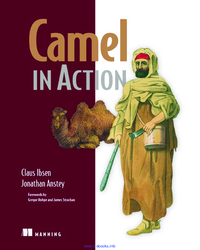
Camel inAction
Enterprise Integration Patterns
60 Visitas | 92 Descargas | 2013-09-24 13:59:41 | dpr
Apache Camel exists because integration is hard and Camel’s creators wanted to make things easier for users. Camel’s online documentation serves as a reference for its many features and components. In contrast, this book aims to guide readers through these features, starting with the simple points and building up to advanced Camel usage by the end of the book. Throughout the book, Camel’s features are put into action in real-life scenarios.
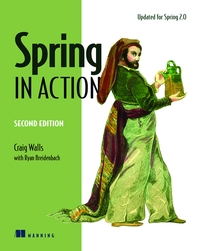
Spring in action
Spring framework
99 Visitas | 155 Descargas | 2013-09-30 14:06:58 | javierd
The Spring Framework was created with a very specific goal in mind—to make developing JEE applications easier. Along the same lines, Spring in Action was written to make learning how to use Spring easier. My goal is not to give you a blow-byblow listing of Spring APIs. Instead, I hope to present the Spring Framework in a way that is most relevant to a JEE developer by providing practical code examples from real-world experiences. Since Spring is a modular framework, this book was written in the same way. I recognize that not all developers have the same needs. Some may want to learn the Spring Framework from the ground up, while others may want to pick and choose different topics and go at their own pace. That way, the book can act as a tool for learning Spring for the first time as well as a guide and reference for those wanting to dig deeper into specific features.
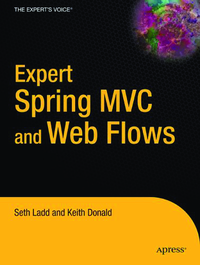
Expert Spring MVC and Web flows
Spring framework
134 Visitas | 202 Descargas | 2013-09-30 14:14:39 | javierd
The Spring Framework has pumped new life into Java development. In the period immediately following the dot com bubble burst, Java applications were facing an uncertain future. The initial promises of J2EE had been thoroughly debunked, .NET was poised to offer a strong alternative, and the industry was generally sobering. Companies began to expect more application for less money and effort, and it wasn’t certain that the J2EE platform would be able to deliver.
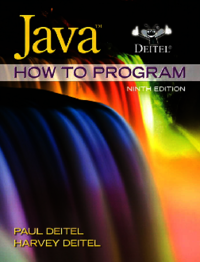
Java How to Program_9th edition
Java Programming language
295 Visitas | 541 Descargas | 2013-10-25 18:35:02 | ybpadron
The book is appropriate for introductory course sequences based on the ACM/IEEE curriculum recommendations and for AP Computer Science exam preparation. We focus on software engineering best practices. At the heart of the book is the Deitel signature “live-code approach”—concepts are presented in the context of complete working programs, rather than in code snippets. Easy to use as a Java SE 6 or Java SE 7 book.
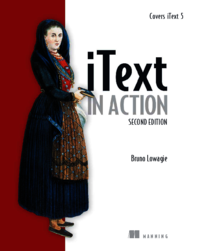
iText in Action. Second Edition.
Manejo de PDF en Java.
123 Visitas | 154 Descargas | 2013-11-14 18:44:59 | rmartinez
This book will teach you about PDF, Adobe’s Portable Document Format, from a Java developer’s point of view. You’ll learn how to use iText in a Java/J2EE application to produce and manipulate PDF documents. Along the way, you’ll become acquainted with interesting PDF features and discover e-document functionality you may not have known about before. Today, iText is the world’s leading F/OSS PDF library. It’s released under the Affero General Public License (AGPL) and is available in two versions: the original Java version, and the C# port, iTextSharp. These libraries make it possible for you to enhance applications with dynamic PDF solutions.
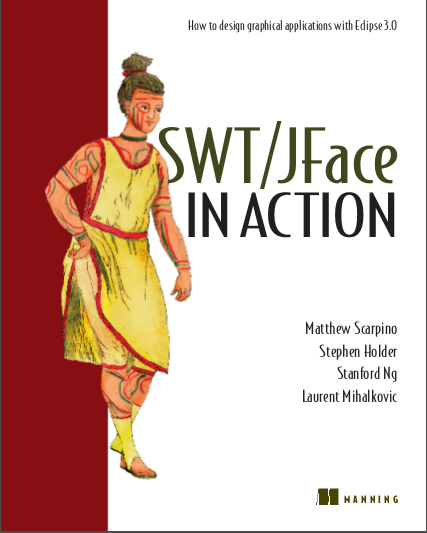
SWT/JFace in Action. GUI Design with Eclipse 3.0.
97 Visitas | 166 Descargas | 2013-11-19 03:07:29 | rmartinez
This book is written with the intermediate to advanced Java programmer in mind. We assume that you’re familiar with the basics of Java syntax and comfortable con- sidering design alternatives where there may not be a single choice that is supe- rior in all situations. Having some experience with developing graphical applications, whether in Java or any other language, will be helpful but isn’t necessary. We define all terms as they’re introduced and attempt to point out the purpose behind each widget as well as discuss the technical details of how to use it. However, this isn’t a book about user interface design, so we won’t attempt to cover the myriad details that go into assembling a compelling user experience out of the widgets we present. We assume that most readers have some experience with Swing, but such expe- rience isn’t necessary to fully enjoy this book. We attempt to draw comparisons to Swing where we feel that doing so imparts additional understanding for Swing vet- erans, but these comparisons are secondary to the main discussion of each topic. We have made sure you can understand every topic in this book without having programmed a single line of Swing code.
The Definitive Guide to NetBeans Platform 7
118 Visitas | 156 Descargas | 2014-01-22 16:21:14 | karelr
Guía definitiva de la plataforma NetBeans en su versión 7. Un recorrido por las principales características de la plataforma.

Google Web Toolkit Tutorial
Programacion web usando GWT
101 Visitas | 137 Descargas | 2014-06-10 14:10:08 | dgalvez
El libro aborta los elementos fundamentales para desarrollar aplicaciones usando GWT. Comienza con los elementos basicos que deben estar disponibles para poder desarrollar aplicaciones con GWT y luego describe las 4 partes fundamentales (modulos) en que se divide una aplicacion GWT. Finalmente se desarrolla una aplicacion paso a paso y se muestra el proceso de despliegue de la misma. El resto del libro esta relacionada con la programacion para web y el uso de widgets.
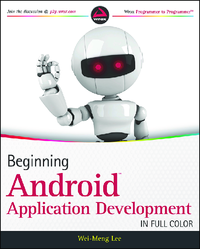
Beginning Android Application Development
219 Visitas | 1415 Descargas | 2014-07-16 14:48:47 | acollazo
i FirSt StArted plAying With the Android Sdk before it was offi cially released as version 1.0. Back then, the tools were unpolished, the APIs in the SDK were unstable, and the documentation was sparse. Fast forward two and a half years, Android is now a formidable mobile operating system, with a fol- lowing no less impressive than the iPhone. Having gone through all the growing pains of Android, I think now is the best time to start learning about Android programming — the APIs have stabilized, and the tools have improved. But one challenge remains: getting started is still an elusive goal for many. It was with this challenge in mind that I was motivated to write this book, one that could benefi t begin- ning Android programmers and enable them to write progressively more sophisticated applications.
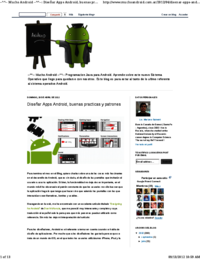
Disear_Apps_Android_buenas_practicas_y_patrones
Desarrollo de Android
236 Visitas | 411 Descargas | 2014-07-16 14:58:00 | acollazo
Aprende sobre este nuevo Sistema Operativo que llego para quedarse con nosotros. Este blog es para estar al tanto de lo ultimo referente al sistema operativo Android.
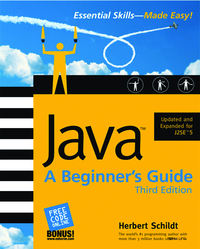
Java: A beginners guide, third edition
Programación en Java
130 Visitas | 166 Descargas | 2015-01-16 15:55:03 | robec
Java is the preeminent language of the Internet. Moreover, it is the universal language of Web programmers around the world. To be a professional Web developer today implies proficiency in Java. Therefore, if Internet-based programming is in your future, you have chosen the right language to learn—and, this book will help you learn it. The purpose of this book is to teach you the fundamentals of Java programming. It uses a step-by-step approach complete with numerous examples, self-tests, and projects. It assumes no previous programming experience. The book starts with the basics, such as how to compile and run a Java program. It then discusses every keyword in the Java language. It concludes with some of Java’s most advanced features, such as multithreaded programming, generics, and applets. By the time you finish, you will have a firm grasp of the essentials of Java programming. It is important to state at the outset that this book is just a starting point. Java is more than just the elements that define the language. Java also includes extensive libraries and tools that aid in the development of programs. Furthermore, Java provides a sophisticated set of libraries that handle the browser user interface. To be a top-notch Java programmer implies mastery of these areas, too. After completing this book, you will have the knowledge to pursue any and all other aspects of Java.
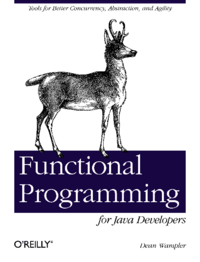
Functional Programming for Java Developers
Functional Programming for Java Developers
114 Visitas | 148 Descargas | 2015-11-02 15:24:52 | pecarrazana
Welcome to Functional Programming for Java Developers Why should a Java developer learn about functional programming (FP)? After all, hasn’t functional programming been safely hidden in academia for decades? Isn’t object-oriented programming (OOP) all we really need? This book explains why functional programming has become an important tool for the challenges of our time and how you, a Java developer, can use it to your advantage. The recent interest in functional programming started as a response to the growing pervasiveness of concurrency as a way of scaling horizontally, through parallelism. Multithreaded programming (see, e.g., [Goetz2006]) is difficult to do well and few developers are good at it. As we’ll see, functional programming offers better strategies for writing robust, concurrent software. An example of the greater need for horizontal scalability is the growth of massive data sets requiring management and analysis, the so-called big data trend. These are data sets that are too large for traditional database management systems. They require clusters of computers to store and process the data. Today, it’s not just Google, Yahoo!, Facebook, and Twitter who work with big data. Many organizations face this challenge. Once you learn the benefits of functional programming, you find that it improves all the code you write. When I learned functional programming a few years ago, it re-energized my enthusiasm for programming. I saw new, exciting ways to approach old problems. The rigor of functional programming complemented the design and testing benefits of test-driven development, giving me greater confidence in my work. I learned functional programming using the Scala programming language [Scala] and co-wrote a book on Scala with Alex Payne, called Programming Scala (O’Reilly). Scala is a JVM language, a potential successor to Java, with the goal of bringing object-oriented and functional programming into one coherent whole. Clojure is the other well-known functional language on the JVM. It is a Lisp dialect that minimizes the use of OOP in favor of functional programming. Clojure embodies a powerful vision for how pro- gramming should be done.
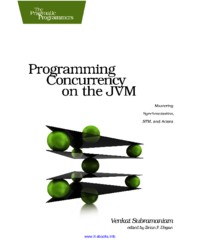
Programming Concurrency on the JVM
Programming Concurrency on the JVM
105 Visitas | 142 Descargas | 2015-11-02 15:31:18 | pecarrazana
I’ve written this book for experienced Java programmers who are interested in learning how to manage and make use of concurrency on the JVM, using languages such as Java, Clojure, Groovy, JRuby, and Scala. If you’re new to Java, this book will not help you learn the basics of Java. There are several good books that teach the fundamentals of Java programming, and you should make use of them. If you have fairly good programming experience on the JVM but find yourself needing material that will help further your practical understanding of programming concurrency, this book is for you. If you’re interested only in the solutions directly provided in Java and the JDK—Java threading and the concurrency library—I refer you to two very good books already on the market that focus on that: Brian Goetz’s Java Concurrency in Practice [Goe06] and Doug Lea’s Concurrent Programming in Java [Lea00]. Those two books provide a wealth of information on the Java Memory Model and how to ensure thread safety and consistency. My focus in this book is to help you use, but also move beyond, the solutions provided directly in the JDK to solve some practical concurrency problems. You will learn about some third-party Java libraries that help you work easily with isolated mutability. You will also learn to use libraries that reduce complexity and error by eliminating explicit locks. My goal in this book is to help you learn the set of tools and approaches that are available to you today so you can sensibly decide which one suits you the best to solve your immediate concurrency problems.
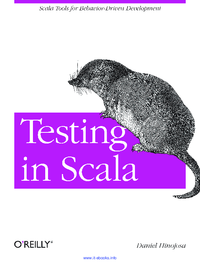
Testing in Scala
68 Visitas | 86 Descargas | 2015-11-02 15:47:56 | pecarrazana
This book enhances the Scala language with standard test-driven development practices, highlighting the best testing tools today. This book will cover both the ScalaTest and the Specs2 testing frameworks, which help you create quick and easy tests. Testing is also often the most overlooked aspect of introductory programming language books. This book is dedicated to mending that gap.We will run all these tests using Simple Build Tool (SBT). SBT is similar to some earlier build tools and competitors: Maven, Gradle, and Buildr. What makes SBT highly attractive is its ease of use and the small size of the build file. Type a few lines of code for your build file and you’re off and running on your project. We will also cover SBT’s wonderful triggered execution feature, which complements test-driven development by building and testing code whenever a file is saved.ScalaTest and Specs2 are two of the most dominant testing frameworks for Scala around today. Each framework has a different intent and goal, but they share the some ideal of making testing concise, and they both leverage the Scala programming language to make testing easy and fun. Testing frameworks are nothing new, of course, and have been used with other programming languages for years. Those familiar with other programming languages and their testing tools will find some similarities with Scala’s current testing tools. ScalaTest and Specs2 borrowed ideas from Cucumber. But upon these shoulders of giants, Scala testing systems have also stepped out on their own and created some of the most mind-blowing testing tools found in any language. Testing in Scala will also illustrate mocking code, so as to keep our tests isolated from large subsystems and networks. Mocking is, in essence, creating a substitute for various objects to isolate tests from volatile elements of their environment (such as the contents of databases) and to help unit tests run fast. This book shows how you can use Scala with Java-based mocking frameworks that have been used for years by Java programmers, EasyMock and Mockito. We will also introduce you to a new framework, ScalaMock. Formerly known as Borachio, ScalaMock was inspired by Java’s EasyMock and Mockito but takes their work further, even offering support for mocking final classes and Scala objects.
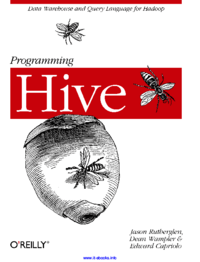
Programming Hive
Apache Hive
89 Visitas | 83 Descargas | 2015-11-13 20:56:41 | pecarrazana
However, a challenge remains; how do you move an existing data infrastructure to Hadoop, when that infrastructure is based on traditional relational databases and the Structured Query Language (SQL)? What about the large base of SQL users, both expert database designers and administrators, as well as casual users who use SQL to extract information from their data warehouses? This is where Hive comes in. Hive provides an SQL dialect, called Hive Query Lan- guage (abbreviated HiveQL or just HQL) for querying data stored in a Hadoop cluster. SQL knowledge is widespread for a reason; it’s an effective, reasonably intuitive model for organizing and using data. Mapping these familiar data operations to the low-level MapReduce Java API can be daunting, even for experienced Java developers. Hive does this dirty work for you, so you can focus on the query itself. Hive translates most queries to MapReduce jobs, thereby exploiting the scalability of Hadoop, while presenting a familiar SQL abstraction. If you don’t believe us, see “Java Versus Hive: The Word Count Algorithm” on page 10 later in this chapter.
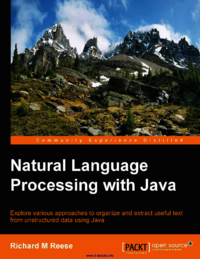
Natural Language Processing with Java
Natural Language Processing with Java
114 Visitas | 135 Descargas | 2015-11-19 21:04:23 | pecarrazana
What this book covers Chapter 1, Introduction to NLP, explains the importance and uses of NLP. The NLP techniques used in this chapter are explained with simple examples illustrating their use. Chapter 2, Finding Parts of Text, focuses primarily on tokenization. This is the first step in more advanced NLP tasks. Both core Java and Java NLP tokenization APIs are illustrated. Chapter 3, Finding Sentences, proves that sentence boundary disambiguation is an important NLP task. This step is a precursor for many other downstream NLP tasks where text elements should not be split across sentence boundaries. This includes ensuring that all phrases are in one sentence and supporting parts of speech analysis. Chapter 4, Finding People and Things, covers what is commonly referred to as Named Entity Recognition. This task is concerned with identifying people, places, and similar entities in text. This technique is a preliminary step for processing queries and searches. Chapter 5, Detecting Parts of Speech, shows you how to detect parts of speech, which are grammatical elements of text, such as nouns and verbs. Identifying these elements is a significant step in determining the meaning of text and detecting relationships within text. Chapter 6, Classifying Texts and Documents, proves that classifying text is useful for tasks such as spam detection and sentiment analysis. The NLP techniques that support this process are investigated and illustrated. Chapter 7, Using Parser to Extract Relationships, demonstrates parse trees. A parse tree is used for many purposes, including information extraction. It holds information regarding the relationships between these elements. An example implementing a simple query is presented to illustrate this process. Chapter 8, Combined Approaches, contains techniques for extracting data from various types of documents, such as PDF and Word files. This is followed by an examination of how the previous NLP techniques can be combined into a pipeline to solve larger problems.
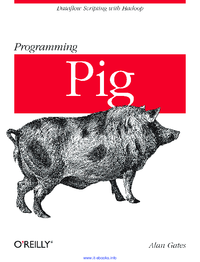
Programming Pig
Programming Pig
70 Visitas | 66 Descargas | 2015-11-27 16:48:20 | pecarrazana
This book is intended for Pig programmers, new and old. Those who have never used Pig will find introductory material on how to run Pig and to get them started writing Pig Latin scripts. For seasoned Pig users, this book covers almost every feature of Pig: different modes it can be run in, complete coverage of the Pig Latin language, and how to extend Pig with your own User Defined Functions (UDFs). Even those who have been using Pig for a long time are likely to discover features they have not used before. Being a relatively young project, Pig has changed and grown significantly over the last four years. In that time we have released versions 0.1 through 0.9. This book assumes Pig 0.7 as the base version. Wherever features are only in versions 0.8 or 0.9, this is called out. The biggest change from 0.6 to 0.7 is that load and store function interfaces were rewritten, so Chapter 11 will not be usable by those on 0.6 or earlier versions. However, the rest of the book will still be applicable. Some knowledge of Hadoop will be useful for readers and Pig users. Appendix B pro- vides an introduction to Hadoop and how it works. “Pig on Hadoop” on page 1 walks through a very simple example of a Hadoop job. These sections will be helpful for those not already familiar with Hadoop. Small snippets of Java, Python, and SQL are used in parts of this book. Knowledge of these languages is not required to use Pig, but knowledge of Python and Java will be necessary for some of the more advanced features. Those with a SQL background may find “Comparing query and dataflow languages” on page 4 to be a helpful starting point in understanding the similarities and differences between Pig Latin and SQL.
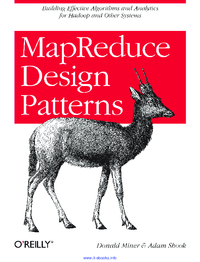
MapReduce Design Patterns
MapReduce Design Patterns
81 Visitas | 90 Descargas | 2015-12-11 18:28:50 | pecarrazana
MapReduce is a computing paradigm for processing data that resides on hundreds of computers, which has been popularized recently by Google, Hadoop, and many others. The paradigm is extraordinarily powerful, but it does not provide a general solution to what many are calling “big data,” so while it works particularly well on some problems, some are more challenging. This book will teach you what problems are amenable to the MapReduce paradigm, as well as how to use it effectively. At first glance, many people do not realize that MapReduce is more of a framework than a tool. You have to fit your solution into the framework of map and reduce, which in some situations might be challenging. MapReduce is not a feature, but rather a con? straint. This makes problem solving easier and harder. It provides clear boundaries for what you can and cannot do, making the number of options you have to consider fewer than you may be used to. At the same time, figuring out how to solve a problem with con? straints requires cleverness and a change in thinking. Learning MapReduce is a lot like learning recursion for the first time: it is challenging to find the recursive solution to the problem, but when it comes to you, it is clear, concise, and elegant. In many situations you have to be conscious of system resources being used by the MapReduce job, especially inter-cluster network utilization. The tradeoff of being confined to the MapReduce framework is the ability to process your data with dis? tributed computing, without having to deal with concurrency, robustness, scale, and other common challenges. But with a unique system and a unique way of problem solving, come unique design patterns.
Contribuir
Usted puede contribuir con Libros UCLV, es importante para nosotros su aporte..
Contribuir